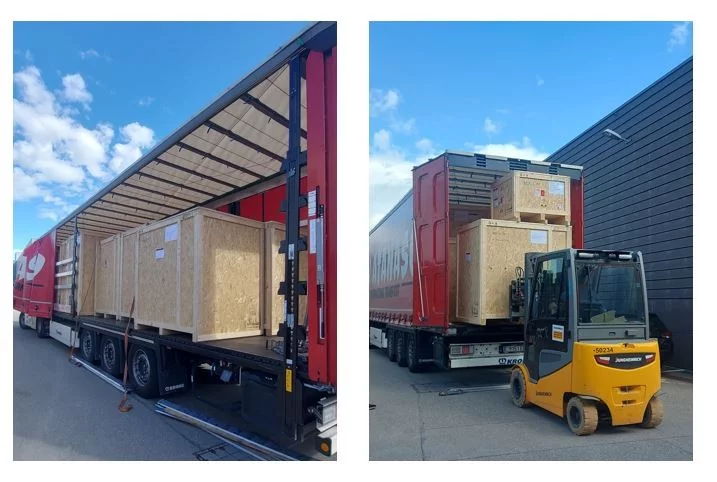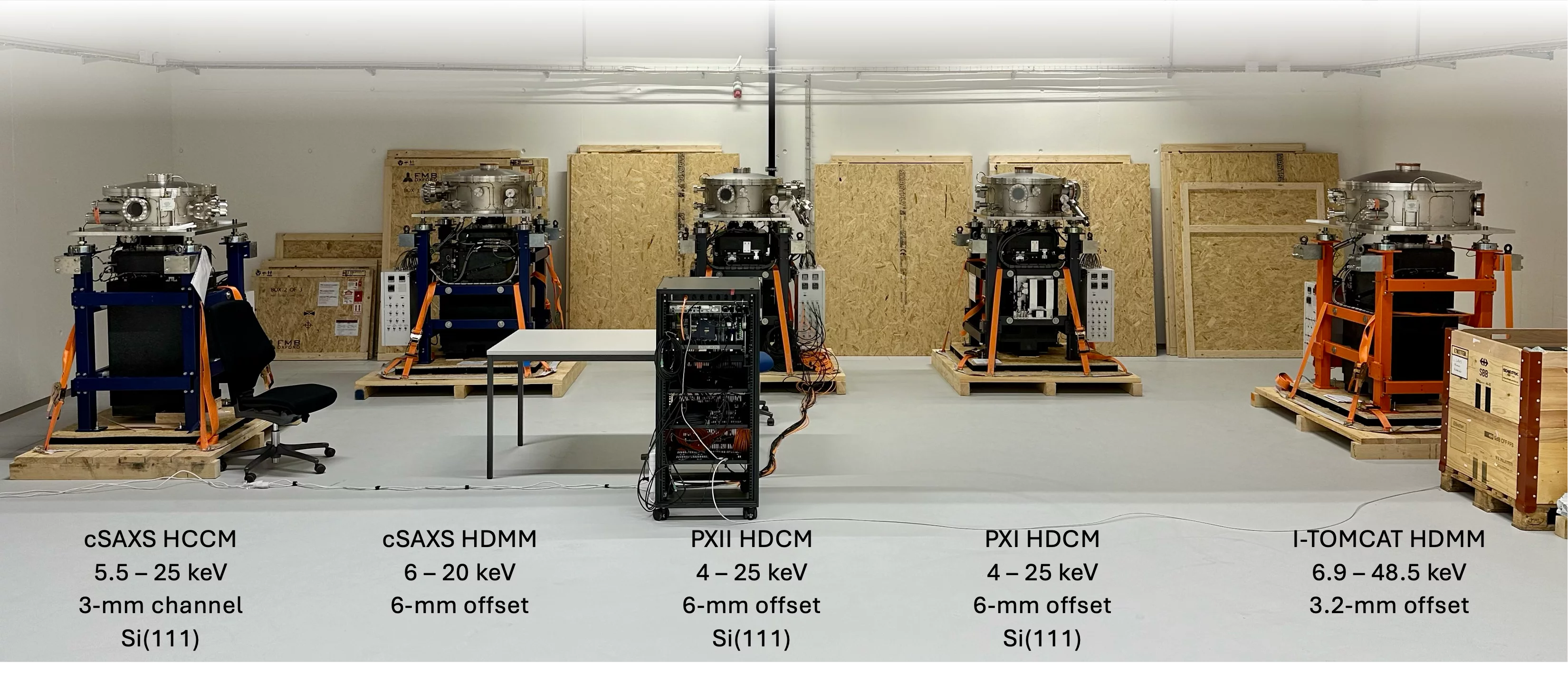Brand-new Hard X-ray Monochromators for SLS 2.0
The new hard X-ray monochromators for the hard X-ray beamlines at SLS 2.0 have now arrived at PSI. The horizontal offset monochromators have been built by XDS Oxford (formerly FMB). The focus of these optical components is laid on beam stability, which is ensured by careful mechanical design, dedicated cryo coolers and careful testing.
On Monday, September 30th, a lorry with 10 tons of payload arrived at PSI. In 19 wooden crates, five brand-new monochromators, their auxiliary equipment, four new cryo coolers, the cryogenic lines and their control racks were transported. Thanks to our colleagues from the Transport Division, the crates were unloaded piece by piece, and distributed to their destinations.
Monochromator Testing in our new Labs at Park Innovaare
All the delivered monochromators have been brought into the new LNO labs in Park Innovaare, where they have been unpacked. With the support of our Motion Controls Section, we are currently testing the monochromators piece by piece. The new labs offer an ideal environment for this purpose, utilizing a vibration-damped floor, an excellent temperature stability and clean working conditions. In the next couple of weeks, the monochromators will be installed at four different beamlines, where they will be ready to perform experiments when the new storage ring is operational after the SLS 2.0 upgrade.
Increased Stability Provides a Leap in Performance
To use synergies between the individual beamline projects, we have developed a concept for hard X-ray beamlines that is tailored to the new storage ring. This is described in a dedicated publication (Rösner et al., Journal of Synchrotron Radiation 31, 2024, pp. 771-778, https://doi.org/10.1107/S1600577524003163), containing a new and modular concept for hard X-ray monochromators. With a simple, easy-to-operate, and robust mechanical design of our monochromators, the beamlines will greatly profit from the increased brilliance of the new storage ring. The major focus is thereby laid on an increased beam stability, in order to provide the highly brilliant beam with its increased coherence to the experiments without distortion by instablities along the beamline optics.

